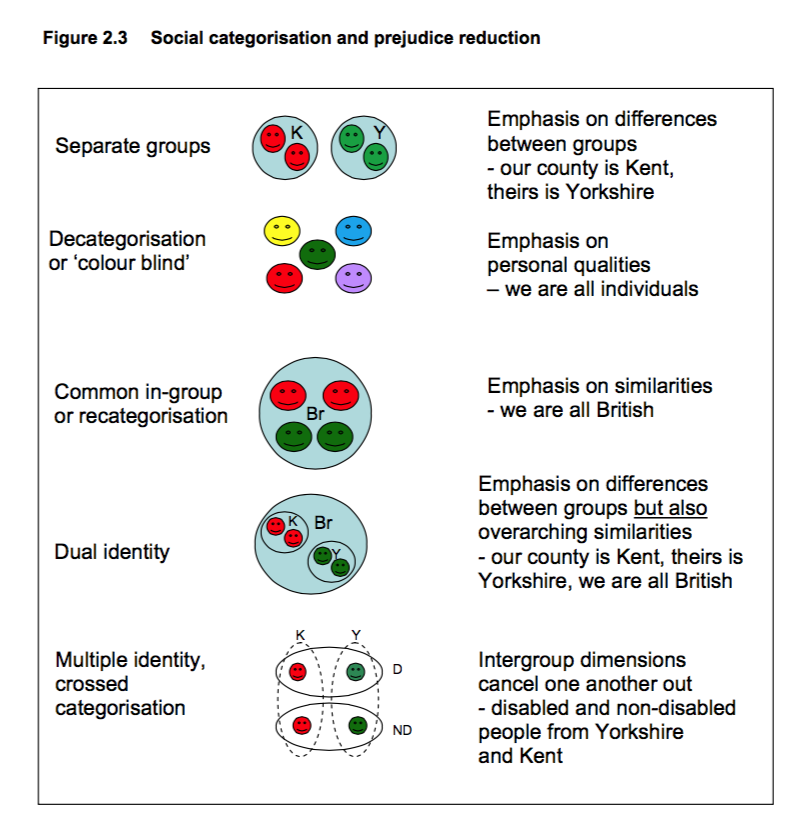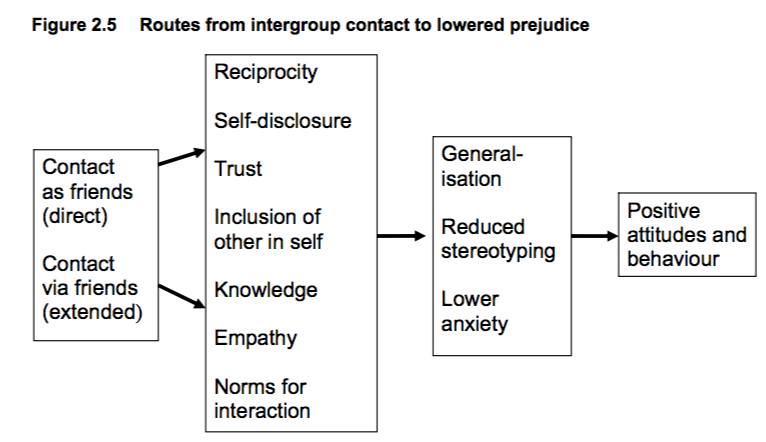Mitigation Tools
Prejudice Thoughts Run Through All Our Minds – The Key Is What We Do With Them…
The following sets of Mitigating Tools are provided by various
organizations & individual efforts. Their Authors and credits are within each of the sets…
These thoughts and ideas were taken from a TED Talk @Ideas. Ted.com in the area of “We Humans…”
The Challenge
The Solution
1. Own Your Own Bias
#1 – Observe any tendencies to judge others or yourself or to enact bias based on privilege. Bring as much self-compassion and emotional openness to that awareness as you can. When do you notice prejudicial thoughts or biased actions popping up? Let go of any tendency to buy into your judgement or make them more important by avoiding them or criticizing yourself for hosting them. These are thoughts, feelings, and invisible habits, and they are yours. You are responsible, but you are not to blame. Just note their existence and increase your awareness of the negative cultural programming that we all carry.
The Challenge
The Solution
2. Connect With Other People’s Perspective
#2 – Deliberately take the perspective of those whom your mind judges, feeling what it’s like to be subjected to stigma and bias, sometimes without conscious awareness by the person doing harm.Don’t run from the pain of seeing those costs, or allow it to slip into guilt or shame. The goal is connection and ownership.Allow the pain of being judged or being hurt to penetrate you. As you do, bring your awareness to how causing anyone that kind of pain goes against your values.
The Challenge
The Solution
3. Commit To Change
#3 – Channel the discomfort of ownership and the pain of connection into a motivation to act. Commit to concrete steps that you can take to reduce the effect of prejudice and stigma on others.This could mean learning to listen more; speaking out when another person makes light of prejudice; stepping back so others can step forward; joining an advocacy group; getting to know people who belong to groups that your mind judges.
Taking these actions is not meant to erase what you are carrying and experiencing but to channel those feelings toward expressing compassion.
You can practice these steps regularly. As you begin to loosen the grip of your implicit biases, you’ll find that your enjoyment of being with people of all kinds increases, no matter how different they may have once seemed to you.
The sad fact is if we’re not helping solve the problem of prejudice, we are helping to perpetuate it. And if we don’t learn to acknowledge our privilege or catch the subtly prejudicial thoughts that go through our minds, we are supporting bias — and potentially passing it on.
It’s hard to admit to ourselves that we’ve been complicit, and it’s hard to diminish the impact of bias. But with work, we can do it.
Unification:
The process of being united or made into a whole or else the act or process of bringing together or combining things or people.
More broadly speaking is when the differences that exist are put aside for a unique thing or solution.
Ruiz Mariscal, Antonio M.: La Armonía y la Paz. 2ª ed, 2007, 412p.
Examples of mankind’s efforts of unification are:
-
-
- Having a unique language to communicate or else a minimum number of them instead of the 7,000 that are known to exist. It is an ongoing process involving a huge effort in teaching, publishing, and so on.
-
- Having a unique currency or else a minimum number of them (like the Euro instead or francs and lire…). There are still many places where there is prejudice towards accepting for example a Belarusian ruble.
-
- Having a unique calendar or chronology.
-
- Having a unique set of weights and scales.
-
- Having a unique notation or symbols, for example in chemistry and mathematics.
-
When eliminating or else reducing the number or options or differences the prejudice that comes from assigning values to them is mitigated or else eliminated.
Integration:
Ruiz Mariscal, Antonio M.: La Armonía y la Paz. 2ª ed, 2007, 412p.
-
-
- Creating groups or organizations going from simple neighbourhood groups to huge international organizations like the United Nations are efforts towards integration and then reducing differences that give way to prejudice.
- Promoting the presentation of differences, cultural, racial, or other in a shared respectful environment, for example in exhibitions or international fairs.
-
- And then there is the most important effort in the integration field which is all the actions everyone can do towards the In a family there is the coexisting of different ages, genders, experiences and much more, in harmony.
Family is still undoubtedly the foundation stone of society and as such, every action that helps to promote or foster it is an action toward the mitigation of prejudice.
-
Equilibrium:
A state in which opposing forces or influences are balanced.
Ruiz Mariscal, Antonio M.: La Armonía y la Paz. 2ª ed, 2007, 412p.
Examples of efforts towards equilibrium are:
-
-
- Ecology or study of the relationships between living organisms, including humans, and their physical environment being one of the pillars of sustainability.
- The classic principle of the golden mean is moderation, or striving for a balance between extremes.
-
When striving to have equilibrium through moderation, sustainability, or similar, prejudice is mitigated.
Values:
Ruiz Mariscal, Antonio M.: La Armonía y la Paz. 2ª ed, 2007, 412p.
Respect: Respect means to accept somebody for who they are, even when they’re different from you or you don’t agree with them. Respect in our relationships builds feelings of trust, safety, and well-being. Prejudice is mitigated or even eliminated.
Tolerance: This value is the willingness to accept or to tolerate, opinions or behaviour we might not agree with, or to behave sensibly with those who are not like us. It means showing respect for the race, gender, opinions, religion and ideologies of other people or groups, and to admire the good qualities and good work of others. Expressing one’s point of view in a decent and respectful way while respecting the sentiments of others.
Tolerance can be shown in many ways, on different occasions and at different times. A person might fully disagree with others on any issue, from religion to politics, while at the same time honouring and respecting those with different ideas and opinions and treating them with full dignity and honour.
3 WAYS TO RESPOND TO OUR OWN BIAS
BASED ON THE WORK OF DENA R. SAMUELS, PHD

1 - ACCEPT
Accept that we do, in
fact, have biases. Make
ourselves aware of
what they may be.

2 - CHALLENGE
Upon uncovering our
biases, we must face
them head on – directly
Challenge them.

3 - EXCHANGE
Learn and practice how
to Exchange automatic
biases for different,
more inclusive notions.


